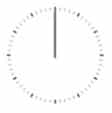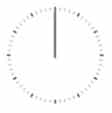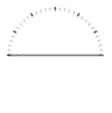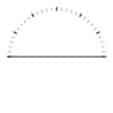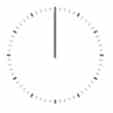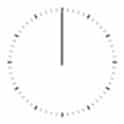- Panning is the spread of a monaural signal in a stereo or multi-channel sound field – it is critical to the makeup of the stereo image.
- Panning adds space in a mix through the placement of the instruments at centre, left and right. Usually the most problematic area of the sound field is the centre, as this is normally the busiest place within a mix.
- It is advisable to keep the kick, snare, bass and vocal in the centre as they provide the music with a solid grounding and help aid the rhythm. Every other instrument however, should be positioned either side of the centre.
- Panning several instruments hard left and right can be tempting to create a wide stereo sound. This can sometimes produce an excellent ‘sonic’ sound, but generally! should be avoided; many instruments can soon become stacked in the same area leading to a masked, muddy sound. Instead of panning hard left and right for all instruments, find a place inside those extremes.
- As a general rule, a mix sounds better being more wide than narrow.
- To maintain balance within a mix, for every element panned one way, another element should be panned the other.
Please note that there are NO absolute rules to panning – like with every aspect of mixing, it is best to experiment.
Use the following chart as a reference point when making your panning decisions.
Summary of Suggested Panning Positions
A clock face is used as the comparable analogy to panning, with 7 and 5 o clock being hard left and hard right. Pan the instruments anywhere between these positions.
|
Instrument |
Position |
Comment |
| Kick | 12.00 | Bass heavy instruments, such as the kick, should be kept near the centre as to not disrupt the balance of the track |
| Snare | 12.00 | The snare reinforces the rhythm of a track and therefore should be set around the centre |
| Toms | 3.00-9.00 | One tom to the left and the other to the right helps balance up the mix. Toms are best used on fills only. Beware if Toms are set too wide they can be very distracting and over-powering in the mix |
| Hi-Hat | 2.00-10.00 | Hi Hats can be panned flexibly as they emit high frequencies and do not disrupt the balance too much |
| Overheads | 3.00-9.00 | Overheads are best panned fairly wide but should never be too loud as to distract the listener |
| Bass Guitar | 12.00 | Bass heavy instruments, such as the bass guitar, should be kept near the centre as to not disrupt the balance of the track |
| Rhythm Guitar | 10:00-2:00 | If the rhythm guitar has been double track pan the two tracks hard left and hard right |
| Acoustic Guitar | 9.00-3.00 | If the acoustic guitar has been double tracked or recorded in stereo pan the two tracks hard left and hard right |
| Piano | 4:00-8:00 (Stereo)
2:00-10:00 (Mono |
For a stereo recording of the piano, pan the two tracks left and right. If recorded in mono try panning just off centre |
| Strings | 4.00-8.00 | Wide pads and strings help to really open up a track |
| Vocals | 12.00 | Vocals should generally be kept dead centre, although there are many stereo techniques which should not be overlooked.
Back-up vocal tracks should be panned left and right to create space. |

